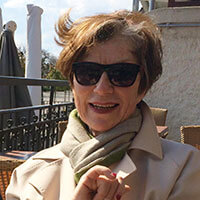Telling Time at mudac, the Lausanne design museum, reveals how watchmakers, artists and designers from the sixteenth century to the present day have found endlessly inventive ways to display time. It also includes the brazen newcomer, the Apple Watch.
According to Arnaud Tellier, historical consultant to the exhibition and former director of the Patek Philippe Museum in Geneva, the first segmentation of time goes back to around 3500 BC, and is attributed to the Chaldea and later to the Assyrians, semi-nomadic tribes who lived in the southern corner of Mesopotamia (modern-day Iraq). Based on their astrological observations, the Chaldea noted that the year was composed of 360 days, namely the time taken for the same stars to return to the same position in the sky. They imagined a numerical division of time and began by slicing the year into six periods of 60 days. The Greek scholar Theon of Alexandria commenting the works of Ptolemy claimed that the sexagesimal system was adopted because 60 is the highest number that can be divided into whole numbers when divided by the numbers 1, 2, 3, 4, 5 and 6, a convenient necessity to establish equal intervals of time. Any number above 60 produces fractions when divided by the same numbers.
The Chaldea then divided the day into six intervals – three for the day and three for the night – the length of which varied according to the seasons and location. The Egyptians chose to mark their sundials with twelve intervals, doubtless corresponding to the number of lunations in a solar year. Building on their example, the Greeks and the Romans doubled the number of intervals to 12 for the day and 12 for the night. Again, these were variable in length. The sexagesimal system is also the likely explanation for how these intervals were divided into smaller units – the hours into 60 minutes and 360 seconds – as well as the division of the circle into 360 degrees.
Mechanical precision
It took the invention of the mechanical clock in the thirteenth and fourteenth centuries to produce an hour of constant length. As Arnaud Tellier reminds us, the first clocks are believed to have been made for communities of monks as a means of signalling prayer times, in particular at night. The ability to display the subdivision of hours into minutes came much later, thanks to the invention of the pendulum (in 1660) and of the balance spring for watches (in 1675) by the Dutch mathematician, astronomer and physicist Christiaan Huygens, who drew extensively on the theories of Galileo.
The exhibition’s co-curator Fabienne Xavière Sturm, who for 30 years headed the Musée de l’Horlogerie in Geneva, points out that the very first timepieces were entirely the work of watchmakers, and remained so until merchants began allocating different stages in production to specialised craftsmen such as goldsmiths, enamellers, engravers and chasers. “This was design before the word,” she says with a smile. Geneva quickly became a centre for watchmaking, benefiting from proximity of the Jura mountains, where the farmers would eke out a living during the harsh winter months by making watch parts, building up valuable expertise along the way.
The future of the watch
By ending its selection with the Apple Watch, Telling Time doesn’t shy away from a discussion of what the future may hold. Alexis Georgacopoulos, director of the Lausanne University of Art and Design (ECAL) that partnered the scenography of the exhibition, notes the almost complete absence of watches on his students’ wrists, although the bold styles of the 1960s and 70s appear to be making a comeback. As for the Apple Watch, he ventures that its success will depend on its ability to be replaced as often as a smartphone. He then suggests, somewhat provocatively, that the arrival of smartwatchs should spark traditional watchmakers into action at last.
Telling Time
Sponsored by the Fondation de la Haute Horlogerie (FHH), the exhibition brings together more than 150 objects from all over Europe. The historic pieces are from private and major public collections, in particular those of the Musée International d’Horlogerie (MIH) in La Chaux-de-Fonds, Musée de l’Horlogerie Beyer in Zurich, Musée d’Horlogerie du Locle – Château des Monts in Le Locle, Musée des Arts Décoratifs in Paris, and the Louvre in Paris, as well as from the heritage collections of leading manufacturers including Vacheron Constantin, IWC and Jaeger-LeCoultre. Scenography is in collaboration with Lausanne University of Art and Design (ECAL), led by Alexis Georgacopoulos and industrial designer Adrien Rovero.
mudac – Lausanne
May 27 – September 27 2015
www.mudac.ch


















